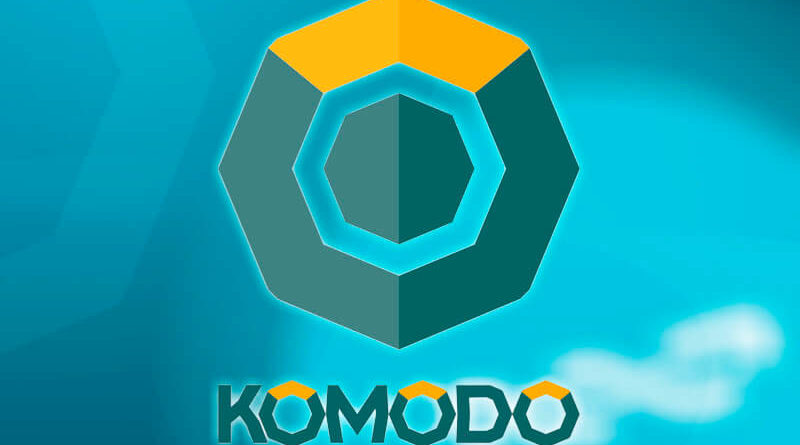The Mode of Komodo
According to the official Komodo website, Komodo “is a secure wallet, and non-custodial decentralized exchange rolled into one. What this means is that you can store your coins, trade peer-to-peer with minimal fees, and never give up control over your digital assets.”
Those are some big promises they’re making with that introduction.
Can it do all that?
Komodo technology originates from the same technology that created Bitcoin. It split off from Zcash (ZEC), which split off from Bitcoin during the last quarter of 2016. It did so in an attempt to solve the issue with the lack of anonymity in Bitcoin.
Thus it took on the same privacy capabilities Zcash developed. Komodo had its start much sooner, however. The founder of Komodo – James Lee – recognized the problem with Blockchain technology back in 2014. Subsequently, Lee developed a proxy token gateway on the NXT platform. This gateway enabled the exchange of NXT for BTC as well as other cryptocurrencies.
This lead to Lee writing the “Blockchain Declaration of Independence” in 2016. In this he founded the Komodo platform.
What was the problem?
The problem Lee identified was that there was no exchange. A person could transfer Bitcoin to another directly in a peer-to-peer way. However, there was no intermediary. Lee did not think this was acceptable in the decentralized cryptocurrency world.
So Lee created a multi-blockchain architecture. This architecture allows projects to develop their own blockchains. Lee refers to them as “Smart Chains”. The “Smart Chains” can communicate with each other while being independent of Komodo. Smart Chains can use their own coin to pay for transactions. They also have their own consensus, and they can support an unlimited number of smart chains.
Komodo evolves
In January 2017, the Komodo Mainnet launched after Komodo earned 2639 Bitcoin as part of an ICO. The launch of the Mainnet lead to the development of multiple new features:
Komodo’s Decentralized Exchange (DEX) was launched in March 2017. This enabled command-line peer-to-peer swaps between Bitcoin protocol-based coins. The Integration of Atomic Swaps into the Electrum SPV Wallet from Bitcoin was launched in October 2017.
Atomic swaps between Bitcoin-based coins and ERC20 tokens was enabled in February 2018. It applies to between 95% of all coins and tokens. Multi-Chain-Syncing and Cross-Chain Interoperability Linking was introduced in July 2018. And finally, the public beta version of AtomicDEX is launched in July 2019. This is the first DEX based entirely on Atomic swaps.
Komodo’s 4 basic principles
- Interoperability: Komodo aims to unify the Blockchain ecosystem. At the same time, it needs to promote the interoperability of its own platform. The blockchain in the Komodo ecosystem can exist and communicate independently of each other or the Komodo project. Consequently, they can create smart contracts between the blockchains. Komodo facilitates the creation of smart chains by providing the Antara Framework, which is essentially a library of modules. Chains can customize by enabling and disabling the desired modules. Komodo goes further by offering white label products such as a crypto wallet, a DEX, and a Block Explorer.
- Safety and security: Komodo provides Bitcoin-Level security. This is based on the anonymity it got from Zcash. They base the platform’s security on Delayed Proof of Work (dPoW). It can connect to the hash of the Bitcoin network. Bitcoin has more hash power than any of the other networks. As a result, all UTXO based smart networks can enjoy this security system.
- Scalability: Komodo provides Multi-Chain-Syncing-Technology. This technology facilitates limitless scalability. This is not a new notion in the crypto industry, but no one has done it better than Komodo. As one project grows and needs more resources, it can expand by creating an additional smart chain within minutes. This process increases scalability. The multi-chain structure Komodo developed can hypothetically support infinite smart chains. Smart chains’ future seems bright: the technology comes with the expectation to reach 1 million transactions per second. And with each transaction made of 100 payments.
- Adaptability: as previously mentioned, the Antara Framework enables the customization of each smart chain. That means networks are fully adaptable to any specific requirements.
KMD
KMD is Komodo’s native token. There are only 200 million KMD. Notably, 100 million KMD are already pre-mined and distributed through an ICO. 90 million of the distributed coins went to investors. At the same time, 10 million was earmarked for the development of the platform.
Is Komodo a good investment?
Komodo fits into the same category as ETH, EOS, Tron and Cardano. Obviously, this is a tough category. However, this is the category where Komodo needs to stand out. The way this platform stands out with its multi-chain-syncing-technology. its smart chains, the dPoW and Atomic swaps.
That doesn’t mean Komodo will win the day against the competition. However, it joins the battle with some powerful weapons in hand. A lot hangs on its ability to achieve a sufficiently large number of users. Hopefully, the official launch of AtomicDEX will help with that.




